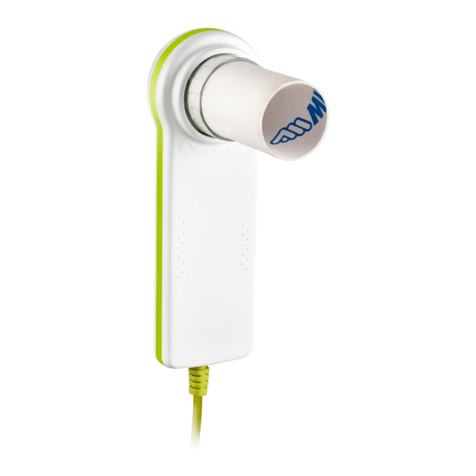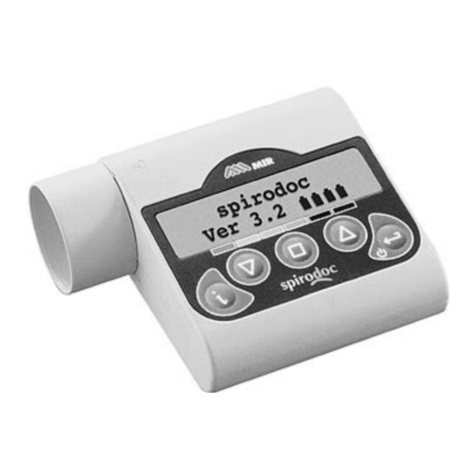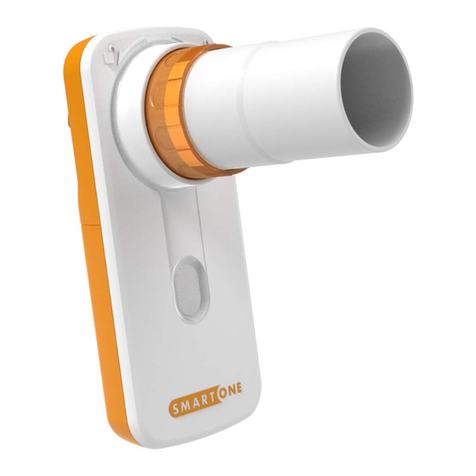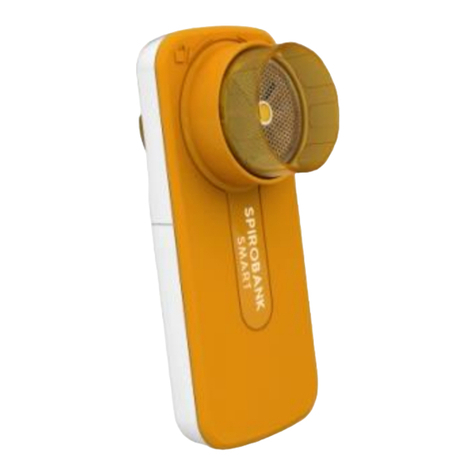
INDEX
1. INTRODUCTION .............................................................................................................................................................................................. 4
1.1 Intended use .......................................................................................................................................................................................... 4
1.1.1 User category ................................................................................................................................................................................... 4
1.1.2 Ability and experience required ......................................................................................................................................................... 4
1.1.3 Operating Environment ..................................................................................................................................................................... 4
1.1.4 Patient effect on the use of the device............................................................................................................................................... 5
1.1.5 Limitations of use – Contraindications ............................................................................................................................................... 5
1.2 Important safety warnings ...................................................................................................................................................................... 5
1.2.1 Danger of cross-contamination ......................................................................................................................................................... 5
1.2.2 Turbine ............................................................................................................................................................................................. 6
1.2.3 Mouthpiece ....................................................................................................................................................................................... 6
1.2.4 Oximetry sensors .............................................................................................................................................................................. 6
1.2.5 USB connection cable ....................................................................................................................................................................... 7
1.2.6 Device............................................................................................................................................................................................... 7
1.2.7 Warnings for use in electromagnetic environments ........................................................................................................................... 8
1.3 Lithium-ion battery pack warning............................................................................................................................................................ 8
1.4 Labels and symbols ............................................................................................................................................................................. 10
1.4.1 Identification label ........................................................................................................................................................................... 10
1.4.2 FDA and FCC Warnings ................................................................................................................................................................. 10
1.4.3 (ESD) Electrostatic discharge sensitivity symbol ............................................................................................................................. 11
1.5 Product description .............................................................................................................................................................................. 11
1.6 Technical specification ......................................................................................................................................................................... 13
1.6.1 Features of the spirometer .............................................................................................................................................................. 13
1.6.2 Oximeter features ........................................................................................................................................................................... 14
1.6.3 Oximetry alarms description ............................................................................................................................................................ 15
1.6.4 Other features ................................................................................................................................................................................. 16
2FUNCTIONING OF THE Spirobank II ............................................................................................................................................................... 17
2.1 Switch on and switch off the device ..................................................................................................................................................... 17
2.2 Energy saving ...................................................................................................................................................................................... 18
2.3 Main screen ......................................................................................................................................................................................... 18
2.4 Symbols and Icons .............................................................................................................................................................................. 18
2.5 Service menu ....................................................................................................................................................................................... 19
2.5.1 Reusable turbine calibration ............................................................................................................................................................ 22
2.6 Patient Data ......................................................................................................................................................................................... 23
2.6.1 Inserting data of a new patient ........................................................................................................................................................ 23
2.6.2 Patient data modification ................................................................................................................................................................. 24
2.7 Visualization of memory data ............................................................................................................................................................... 24
2.7.1 Database research modality ............................................................................................................................................................ 24
2.7.2 Visualization of database info .......................................................................................................................................................... 24
2.8 PC On line mode (connected to a PC) ................................................................................................................................................. 25
2.9 Spirometry testing ................................................................................................................................................................................ 25
2.9.1 FVC test .......................................................................................................................................................................................... 26
2.9.2 Test VC ........................................................................................................................................................................................... 26
2.9.3 MVV Test ........................................................................................................................................................................................ 26
2.9.4 POST test, after drug administration ............................................................................................................................................... 27
2.10 Viewing the spirometric results ............................................................................................................................................................ 27
2.10.1 Spirometry test interpretation .......................................................................................................................................................... 27
2.11 Oximetry Testing.................................................................................................................................................................................. 28
2.11.1 Instructions for Adult Patient Sensor ............................................................................................................................................... 30
3DATA TRANSMISSION .................................................................................................................................................................................... 30
3.1 Data Transmission via Bluetooth.......................................................................................................................................................... 31
3.2 PC connection via USB port ................................................................................................................................................................. 31
3.3 Internal software upgrade .................................................................................................................................................................... 31
4MAINTENANCE ............................................................................................................................................................................................. 31
4.1 Cleaning and checking the reusable turbine ......................................................................................................................................... 32
4.1.1 Proper turbine operation check ....................................................................................................................................................... 32
4.2 Cleaning of the device ......................................................................................................................................................................... 33
4.3 Oximetry sensor cleaning .................................................................................................................................................................... 33
4.4 Battery charging................................................................................................................................................................................... 33
5PROBLEM SOLVING ....................................................................................................................................................................................... 34
LIMITED WARRANTY CONDITIONS ..................................................................................................................................................................... 35

































